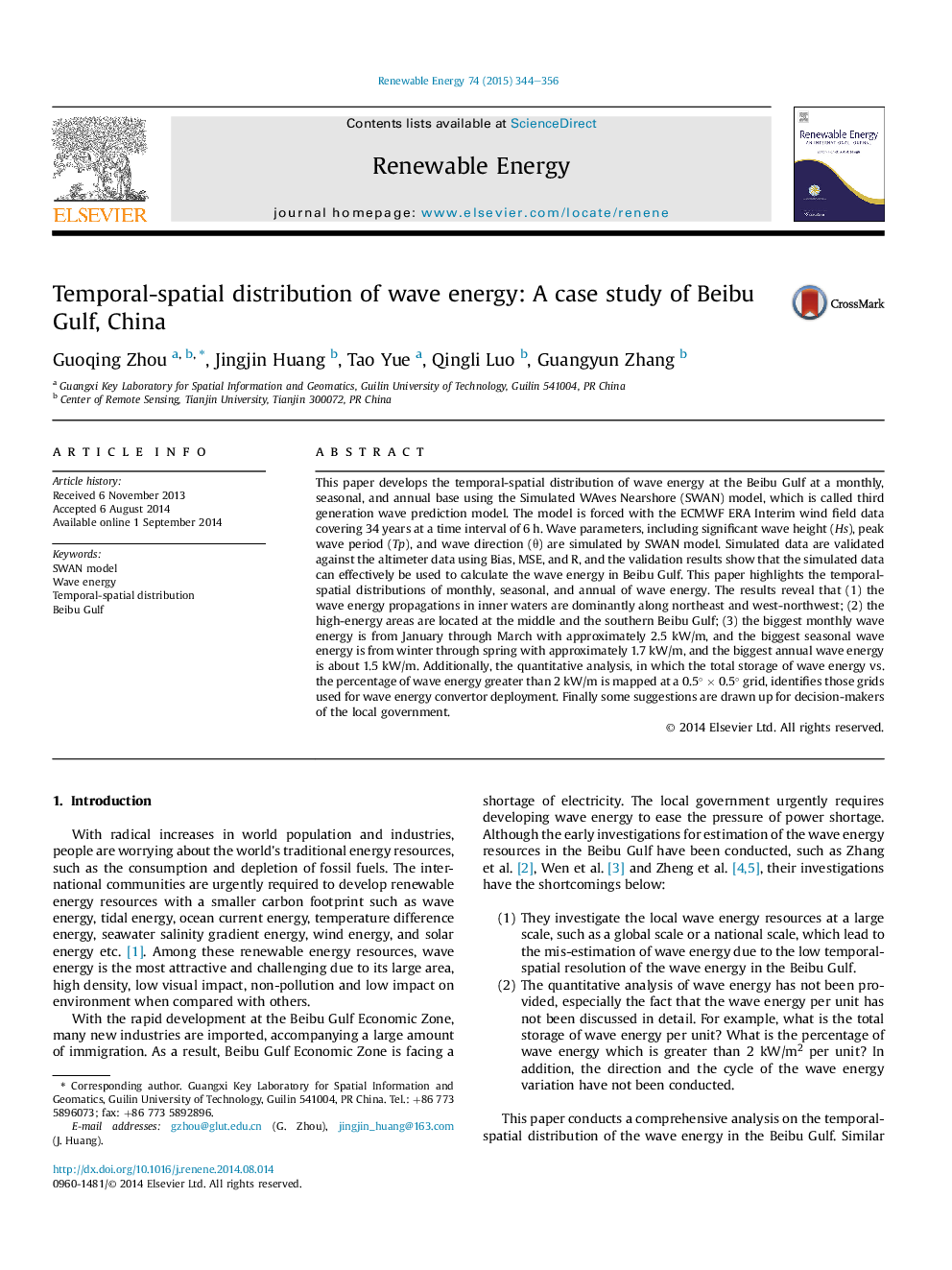| کد مقاله | کد نشریه | سال انتشار | مقاله انگلیسی | نسخه تمام متن |
|---|---|---|---|---|
| 299984 | 512465 | 2015 | 13 صفحه PDF | دانلود رایگان |
• Long term wave data in Beibu Gulf covering 34 years are simulated by SWAN model and are validated by altimeter data.
• Temporal-spatial distributions of wave energy are analyzed independently for the first time in Beibu Gulf.
• The stability analysis of wave energy is conducted and the total/exploitable storages of wave energy are discussed.
This paper develops the temporal-spatial distribution of wave energy at the Beibu Gulf at a monthly, seasonal, and annual base using the Simulated WAves Nearshore (SWAN) model, which is called third generation wave prediction model. The model is forced with the ECMWF ERA Interim wind field data covering 34 years at a time interval of 6 h. Wave parameters, including significant wave height (Hs), peak wave period (Tp), and wave direction (θ) are simulated by SWAN model. Simulated data are validated against the altimeter data using Bias, MSE, and R, and the validation results show that the simulated data can effectively be used to calculate the wave energy in Beibu Gulf. This paper highlights the temporal-spatial distributions of monthly, seasonal, and annual of wave energy. The results reveal that (1) the wave energy propagations in inner waters are dominantly along northeast and west-northwest; (2) the high-energy areas are located at the middle and the southern Beibu Gulf; (3) the biggest monthly wave energy is from January through March with approximately 2.5 kW/m, and the biggest seasonal wave energy is from winter through spring with approximately 1.7 kW/m, and the biggest annual wave energy is about 1.5 kW/m. Additionally, the quantitative analysis, in which the total storage of wave energy vs. the percentage of wave energy greater than 2 kW/m is mapped at a 0.5° × 0.5° grid, identifies those grids used for wave energy convertor deployment. Finally some suggestions are drawn up for decision-makers of the local government.
Journal: Renewable Energy - Volume 74, February 2015, Pages 344–356
